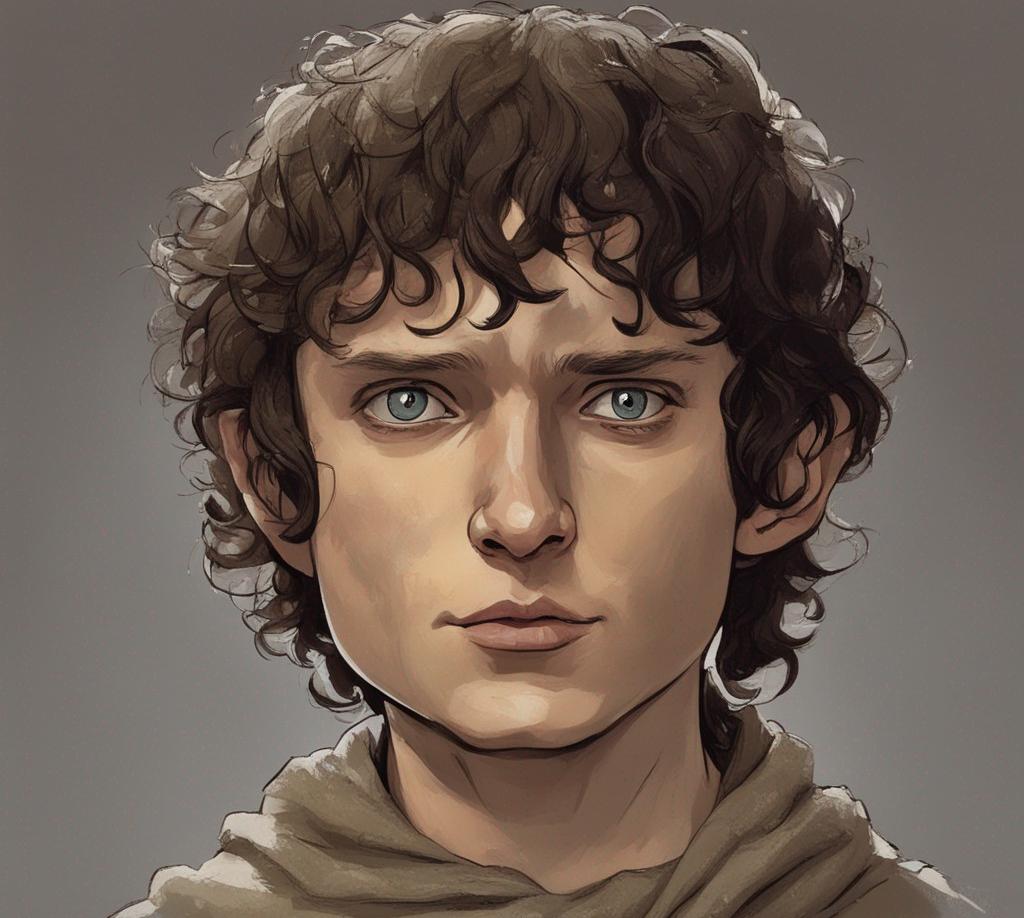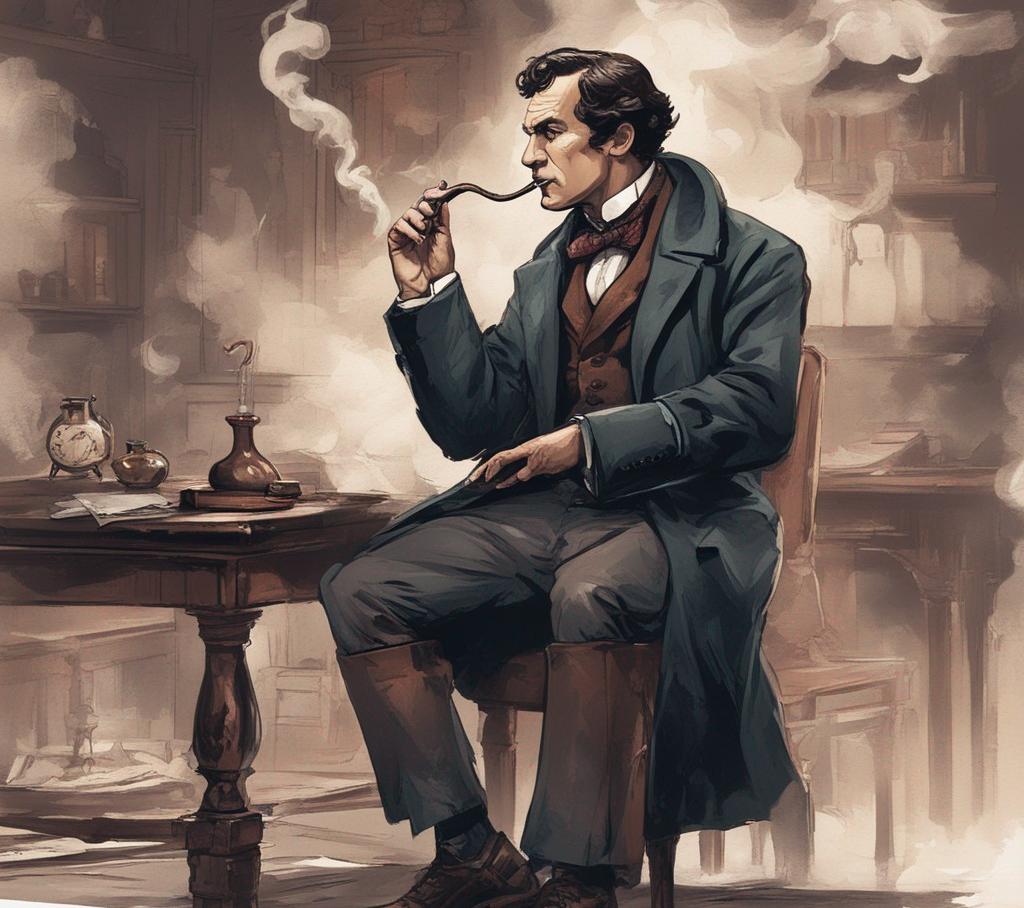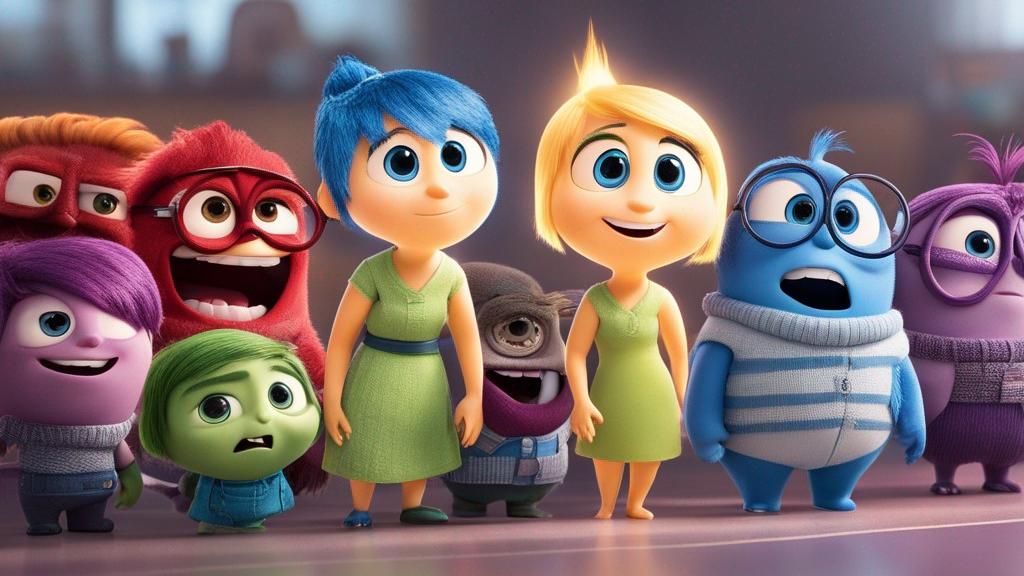A Screenwriter's Guide to Creating Extraordinary Character Arcs

Greetings, aspiring screenwriters! We're delighted to embark together on a thrilling journey to master the art of creating compelling character arcs. If you've ever wondered how a character evolves, propelling the narrative forward, a character arc is your answer. The lifeblood of storytelling, character arcs shape and drive the story, derived from the deep understanding of your character's desires, fears, and the obstacles they face. Navigating through the tumultuous waters of conflict and change, can result with authentic, relatable characters that strike a chord with audiences. Misunderstandings often surround this area, even leading to the hazardous fallout of neglecting character arcs altogether. Brushes with this can result in stale narratives that fail to resonate. Ensuring you blend relatable authenticity with strategic thinking, we're going to delve further into the captivating world of generating compelling arcs. So join us, as we introduce you to our guide on creating character arcs, a lifeline for every screenwriter.
What are Character Arcs?

Character arcs are a fundamental element of storytelling, serving to shape and propel the narrative in a captivating manner. They represent the transformation or inner journey of a character throughout a story, from a starting point to a clearly-defined end point. This narrative tool is important because it enables a character to evolve, grow, learn, or change in a significant way, which makes the story more engaging and relatable for the audience.
A character arc is defined by the changes a character undergoes throughout the plot, which are largely triggered by the various events and conflicts that they encounter. These changes are often dynamic, with the character evolving in response to the situations they find themselves in. For instance, a fearful character might evolve to become brave, or an innocent character could turn evil. However, it's essential to note that neglecting the character arcs can lead to a storyline that feels disjointed or unsatisfactory. The absence of a strong character arc can rob the plot of depth, authenticity, and emotional impact. Hence, to evoke a powerful reaction from your audience and hold their attention, a well-structured character arc should always be incorporated into your storytelling.
The Basics of Creating Arcs

To begin, crafting an extraordinary character arc requires a deep understanding of your character. This means knowing their desires, fears, and obstacles intimately. A character must be relatable and authentic to captivate an audience. For instance, Frodo from "The Lord of the Rings" is characterized by his strong desire for peace, fear of the ring's power, and the physical and mental obstacles he faces on his journey. Each aspect contributes to his complex arc.

Next, creating compelling character arcs hinges on conflict and change. Conflict is the catalyst that forces a character to grow, develop, or transform over time. Without it, your narrative could feel stagnant. So, introduce conflict that challenges the character, like how conflict pushes Harry Potter from being an ordinary boy living under the stairs to the hero who vanquishes Voldemort.

An essential factor in creating character arcs is authenticity. Your audience won't connect with a character if they're not believable or consistent. Strive to create arcs that reflect real-life experiences and emotions, like Rocky Balboa's arc that resonates with anyone who's battled against the odds.
However, there are common misconceptions about character arcs. A misconception is that all character arcs must result in positive change or growth. This isn't always true, as seen with Anakin Skywalker's descent into Darth Vader in Star Wars, exemplifying a negative character arc.
Lastly, neglecting character arcs can lead to plot holes and a disengaged audience. A lack of character development may make the plot feel forced or inauthentic. The evolution of Tony Stark from an arrogant genius to a self-sacrificing hero in the "Iron Man" series highlights the necessity of character arcs in driving the storyline.
Remember, your guide to creating character arcs starts with deeply understanding your characters, intertwining conflict and change, maintaining authenticity, dispelling misconceptions, and avoiding the consequences of neglecting character arcs.
Type of Character Arcs

Diving into the various types of character arcs can serve as a comprehensive guide to creating character arcs. At the primary level, we could categorize character arcs into three main kinds. These are Positive, Negative, and Flat arcs. Let's delve deeper into each one to understand how they contribute to the story.
Positive character arcs often tell a tale of a flawed person overcoming their failings, growing into a more rounded individual. A classic example of this is the story of Ebenezer Scrooge in Charles Dickens' "A Christmas Carol". Here, the initially miserly and dispassionate Scrooge experiences trials that reshape him into a kind-hearted and generous individual. Such arcs, filled with optimism, build and maintain a feel-good factor in stories.

Next, let's shed some light on negative arcs. It's a common misconception that these narratives are less engaging or relevant; not so. Just look at "The Godfather", where we see Michael Corleone sliding from an innocent into a ruthless mafia boss: it's a negative arc, but still makes an undeniably gripping storyline. Negative arcs work well when exploring the depths of human frailties and fallibility.

Lastly, there are flat arcs – the characters that stay pretty much the same from inception to conclusion. Despite this seeming lack of personal growth or decline, such characters can lead robust narratives. Sherlock Holmes, for instance, remains the brilliant and aloof detective throughout Arthur Conan Doyle's stories. These characters, steady and unchanging, often affect the world around them instead of changing themselves. Understanding these variations enriches your guide to creating character arcs and helps you maximize your characters' potential.
Guide to Start an Arc

Starting an intriguing character arc revolves around a gripping setup: the character's current situation, their "normal world", along with their initial dreams and fears, must be clearly defined. This primary step provides context and allows the audience to develop an empathetic connection with the character. For example, consider Frodo Baggins from "The Lord of the Rings"; his peaceful life in the Shire and desire to avoid any grand adventures creates a baseline from which his epic journey springs.
An equally integral part of initiating an arc is creating an unbearable pressure or conflict for the character. This conflict disrupts the equilibrium of their "normal world" and propels them into an uncharted territory leading to an internal or external transformation. For instance, take the iconic character arc of Luke Skywalker from "Star Wars". His normal life as a farm boy on Tatooine is disrupted when he receives a distress message from Princess Leia, thrusting him into a galactic conflict and setting the tone for his transformation from a naive boy to a wise Jedi.
Keep in mind that adequately starting an arc is the lynchpin to the overall story, and it's the stress and conflict that will truly drive the guide when creating character arcs. It prepares the stage for presenting a compelling and transformative journey for the character, capturing the viewers' attention and enticing them to invest emotionally in the character's evolution.
Middle Arc Development

In the development of the middle arc, focusing on pivotal turning points and escalating conflict is crucial. These elements add depth to the narrative, shaping the character's journey and portraying their struggles. Turning points push the character out of their comfort zone, challenging their beliefs, values, and strengths. They may face physical danger, emotional challenges, or intellectual crossroads. Giving characters difficult decisions allows them to exhibit their complexity and engages the audience. This stimulation of tensions adds a dynamic twist to the character's journey, keeping the viewers intrigued and invested in the story.
Maintaining viewer engagement in the middle of the arc opens up opportunities for creative storytelling. Frustrating and thwarting the character's desires build up suspense and creates anticipation in the viewers' minds. This could involve heart-breaking setbacks or revealing hidden aspects of the character. This approach contributes to character development by exploring their resilience, adaptability, and perseverance. Additionally, it enhances viewers' emotional connection, drawing them deeper into the character's journey.
For screenwriters looking for a guide to creating character arcs, fostering this intense engagement during the middle of the arc is a proven strategy. Through unexpected turns, rising tensions, and complications, we can see the character struggle and evolve. It also keeps the viewers on the edge, wanting to know if the character will overcome these trials or change in the process. This key period in the character's transformation ultimately sets the stage for the culmination of their arc.
Ending an Arc Successfully

Concluding a character arc with finesse is of paramount importance; it gives credence to the character's development and the storyline that audiences have been avidly following. A successful ending doesn't always mean a happy one but rather involves the character experiencing a substantial growth or shift. This change can manifest in various forms, including moral evolution, emotional maturation, or a newfound understanding of their world and themselves.
Endings are transformative, whether they conclude with resounding success or spectacular failure. Skyrocketing triumphs may appear more gratifying, but it is crucial to recognize that failure can also be a powerful catalyst for change in a character's journey. Devastating defeats often expose vulnerabilities, pushing characters to confront their fears and limitations – a path that can lead to profound personal growth.
For instance, look at a character who aspired to win a prestigious accolade but lost. On the surface, this might seem like a disappointing arc end. But if this loss propels the character into realizing that personal growth and happiness lie beyond societal recognition, that's a successful ending. Emphasize the fact that the real triumph lies in learning and evolving, regardless of the outcome.
In the guide to creating character arcs, remember that endings should synthesize previous experiences and offer closure, whether through success or failure. This culmination becomes the tipping point in their journey—a poignant moment echoing the culmination of their trials, challenges, and personal growth, fulfilling the arc in a meaningful way. Hence, the ending of an arc is not merely an ending but a critical juncture highlighting the character's transformation throughout their journey.
Common Arc Mistakes to Avoid

In the quest to master the art of scripting magnificent character arcs, there are often some stumbling blocks to be wary of. One such hurdle involves inconsistencies in character behavior. Screenwriters must ensure that their characters maintain a consistent personality. An unpredictable character might seem attractive for the element of surprise, but it can also lead to confusion and disbelief among the audience if not handled well. Sporadic changes in a character's personality without appropriate reasons or triggers can disrupt the narrative flow. Gradual character development, therefore, is key to crafting authentic arcs.
Another typical pitfall to avoid in the guide to creating character arcs is neglecting the minutiae of character growth. Ideally, a character should not suddenly leap from being an introvert to an extrovert without showing the stages and triggers of this change. Similarly, maintaining balance in character transformation is essential to steer clear of melodrama, which can feel forced and artificial to the audience. For instance, a character going from depression to extreme happiness might otherwise seem contrived unless substantial emotional events warrant such a change. Always remember that the beauty of character arcs lies in portraying the subtleties of growth and transformation, not in drastic swings.
Examples of Brilliant Arcs

To help aspiring screenwriters on their journey, it’s important to dissect and understand successful character arcs from popular films and television series. By examining proven narratives, you can learn valuable techniques and strategies for creating compelling arcs in your own work.
For instance, consider the arc of Luke Skywalker from "Star Wars" or Tony Stark from the Marvel Cinematic Universe. These characters begin as unsure and flawed individuals, but over the course of their stories, they change by facing fears, making sacrifices, and ultimately becoming heroes. These arcs are satisfying to audiences because we relate to their struggles and are inspired by their transformations.
However, not all arcs result in positive transformation. For instance, Walter White from "Breaking Bad" begins as a mild-mannered science teacher. Over the series, his choices and actions lead him further into criminality and moral decay, providing a complex, captivating, and ultimately negative character arc that keeps viewers glued to their screens.
Flat arcs, where characters don't change much, also hold value. Sherlock Holmes in the "Sherlock" series is a prime example. Although Sherlock’s personality and habits remain largely unchanged, his understanding of the world and his place in it subtly shift, driving the drama and intrigue of the entire series.
Thus, effective arcs vary greatly, but they share a common foundation: strong, consistent characterization and compelling transformation, whether positive, negative, or flat. This analysis should provide a helpful guide to creating character arcs that can captivate your audience and make your story unforgettable.
Final Thoughts on Character Arcs
To conclude, the importance and role of character arcs in screenplay development cannot be overstated. This journey of transformation, whether centering on inner change or external resolution, marks the pulse of storytelling and lays the cornerstone of audience engagement. As an aspiring screenwriter, you are now acquainted with the rudimentary bricks and mortar of arc construction – a roadmap yet unique to your characters and their stories. The galaxy of stories awaiting creation in the realm of your imagination is infinite. So, fearlessly explore your characters, give them flaws, desires, and challenges. Always remember, the everyday struggles of these fictitious beings, their victories or defeats, are what resonate with your audience and make your stories relatable and memorable. In a nutshell, this guide to creating character arcs is your compass in this enthralling journey of fashioning vibrant, complex lives on the silver screen. Your characters are waiting for their stories to unfold. Let their arcs rise and fall, for the pen is in your hand.
